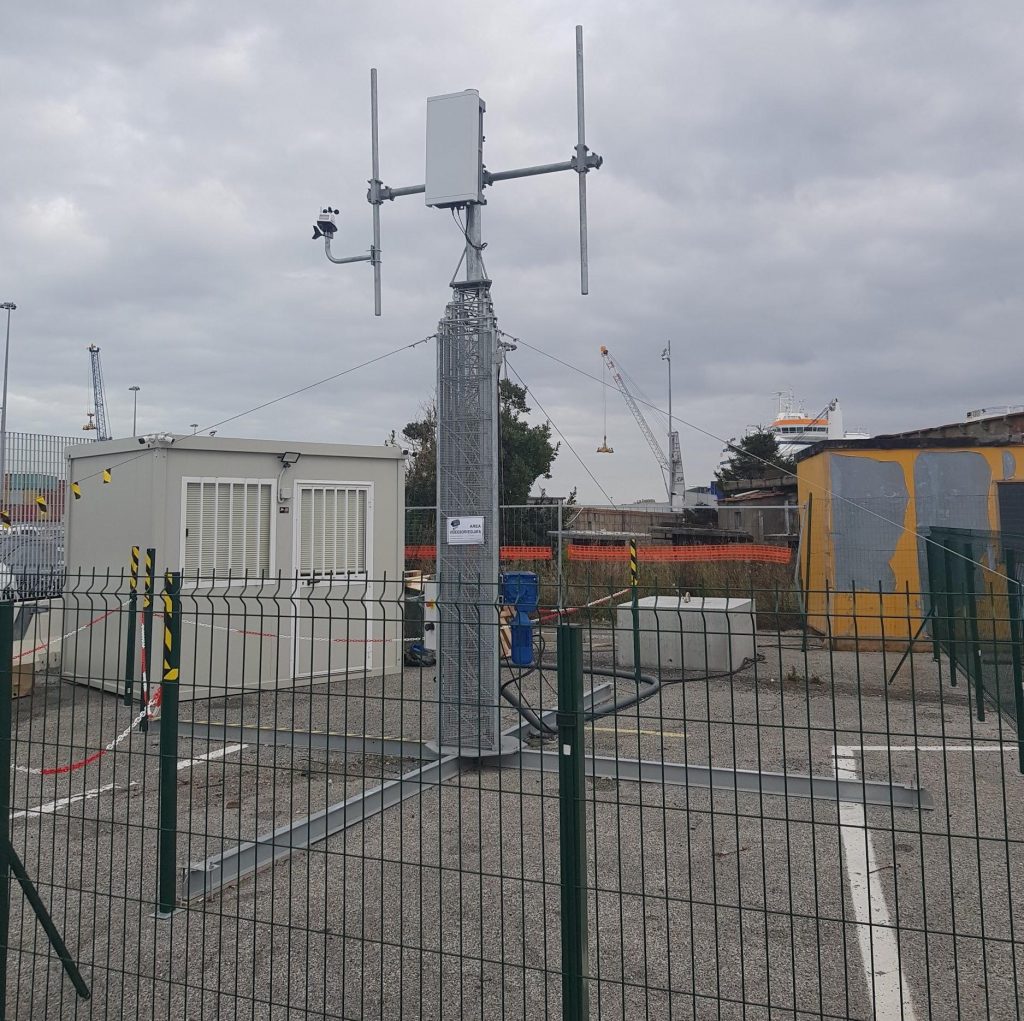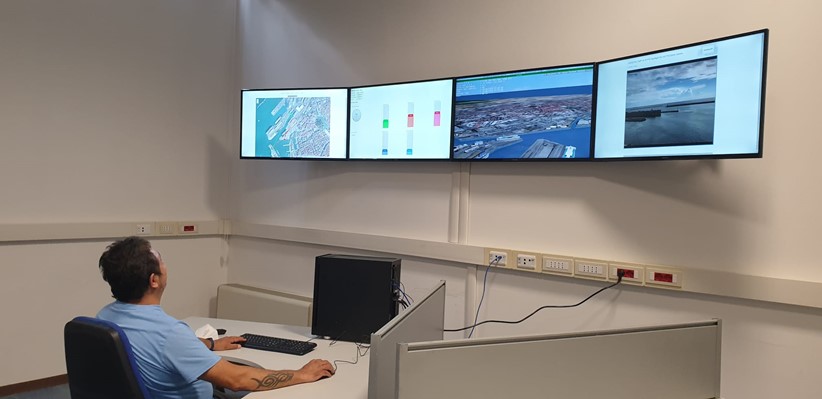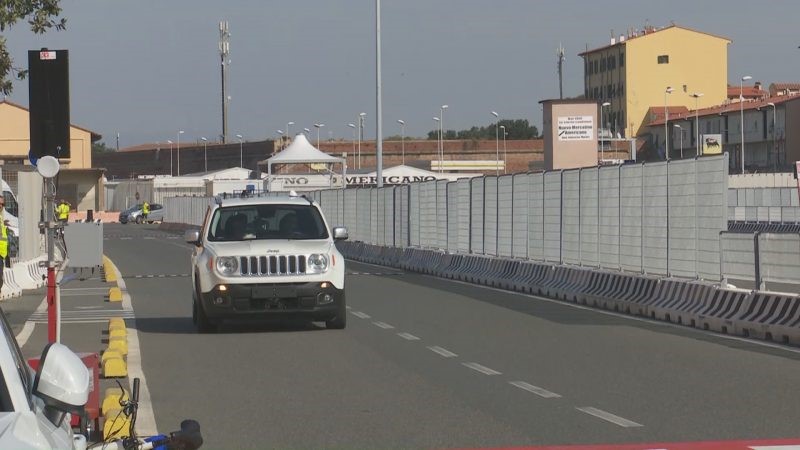The smart city model is more and more adopted at European and national scales. It proposes solutions and use cases which are all characterized by limited validity, because it is related to the urban context and to the “Citizen”, without considering the opportunities deriving from the integration with other constituents of our societies (e.g., industrial communities, manufacture plants, logistics, etc.). Thus, from an economic, environmental and social perspective, attention must be paid to a wider and more complex system, often referenced as “Smart Landscape”, ready for a synergic, coordinated and integrated approach, optimizing investments in efficiency while guaranteeing a decent quality of life to citizens and workers.
Along this line, logistics represents an industrial policy strategic instrument, as it enhances the excellence of the production system while promoting the development of eco-sustainable transport solutions.
Worldwide technology investments on smart city initiatives is forecast to more than double between 2018 and 2023 (from 81 billion U.S. dollars in 2018 to 189.5 billion in 2023) [1]. The national programs on the subject of Smart Landscape (“AgID [1], Three-Year Plan 2019-2021”)[2], should therefore be synergically framed into a broader perspective, to make the vertical solutions interoperable, in order to achieve an intelligent and safer passenger and goods transportation management and by promoting the development of services designed and implemented on the basis of citizens and business needs.
In this regard, new ICT technologies (such as 5G, Artificial Intelligence, Internet of Things and Blockchain) are needed for a sound and effective realization of the “Smart Landscape”.
These ICT technologies could be used to define and implement a smart port. In a “everything as a service” (XaaS) paradigm, 5G connectivity acts as the “glue” that sticks the puzzle together. Rather than being used for personal purposes, 5G networks are a powerful tool for realizing the Industry 4.0 concept because of their achievable high performance. 5G technology does not only allow to reach a data transmission speed up to 10 times higher than the one ensured by the actual 4G networks, but also to manage at the same time millions of connected entities necessary for the development of Industry 4.0 applications, and to achieve very low latency and high reliability connections which are necessary for real-time control and monitoring in business processes.
As the Italian territory is characterized by the presence of several logistics and maritime hubs, close (or even fully integrated) with urban settlements, it is essential to meet a “smart” integration between cities and their ports. Port and municipality authorities are indeed expected to jointly address the sustainable development of maritime businesses.
Ports are large-scale industrial deployments handling 90% of global cargo traffic. However, many ports are still having issues in integrating and fully optimizing automation systems into their processes in order to reduce operational delays caused by vessel and truck congestion at the occurrence of unforeseen events (such as the recent blockage of the Ever Giver vessel in the Suez Canal). This applies to port cities as well, where these ecosystems are more instable and a higher degree of co-governance is required.
For instance, by knowing in advance the arrival time of a ship carrying trackable freight, it is possible to well arrange the trans-shipment operation without a stock-break, by avoiding queues and delays at the port gates or at sea. Moreover, vehicles can be scheduled in a specific and precise way, as not to congest port and city areas. This is ideally achievable by integrating traffic data in the routing algorithm, which is helpful for planning alternative routes in case of traffic jams.
Full digitalization of the logistics chain with the deployment of smart, safe and secure “fast corridors” (interconnecting logistics nodes like rail-road terminals usually located in the city outskirts) will address the usual target of logistics, namely that of time and cost savings while reducing the pressure towards the city and its daily life.
And network planning (notably that of 5G) is definitely a matter of port-city co-design configuring the city as the host and the port communities as the beneficiaries of this new technology.
5G [3] networks can indeed let smart ports address real-time challenges, with a cost overhead reduction of 2.5 M€ [4].
5G speed and low latency can enable different use cases boosting the aforementioned ones. Artificial Intelligence is crucial for improving forecasting in port operations. Having the ability to anticipate demand for berthing and other services simplifies operations and improves customer experience. Connecting so many devices (such as, for example, HD cameras) over a large area is typically very expensive, 5G can connect them with no need to implement any additional communications infrastructure.

Urban areas, as well as the logistic nodes, represent complex dynamic (non-linear) systems, since an action on any of the subsystems has effects and impacts also on other subsystems. The propagation of an action could therefore determine final results that are not directly quantifiable in terms of overall benefits. Thus, port and urban areas can be studied with the same tools and technical solutions are worth to be provided to their composite system avoiding discontinuities and maximizing the effects [3].
The Livorno port, favorably situated in western Tuscany, plays a major role in the European internal trade, ensuring frequent and fast maritime connections to southern European countries, as well as in the EU external trade, thanks to its well-established linkages to northern African countries and the Americas. Livorno is also considered a pivotal node in the logistic chains linking the Mediterranean to central-east Europe. The Port Authority in collaboration with CNIT designs and supervises the implementation of the digital agenda tailored to the Port Communities and the neighbor City [5]. Both public organizations are asked to comply with AgID roadmap for digitalization of the public sector.
Among the lines of action of the AgID “Three-Year Plan for Information Technology in Public Administration 2019-2021”, a “Smart Landscape Platform (SLaP) for Administrations” is proposed as a managerial tool to turn smarter the whole Public Administration sector [2]. More specifically each administration willing to be “smarter” is expected to provide its own services and its related APIs (or use those already available in the SLaP platform) [7] avoiding duplications (or overlaps) and favoring the re-use and integration of innovative solutions that are already being operationally tested.
The digitization process includes process re-engineering, risk analysis, integrated control and, lastly, a “full-digital” business approach. The digitalization level of Public Administration is then measured by specific key performance indicators (KPIs), linked to specific rankings, such as those established by the World Bank and the World Economic Forum. Among others, KPIs assess the level of digitalization, openness, the number of available “full-digital” services, the level of data security and privacy protection.
Everything related to the digitization process is based on a paradigm where Public Administrations are active drivers of growth. The paradigm is based on stakeholders’ engagement (throughout all the process phases, from “vision” to “execution”), on culture building, on implementation rules definition.
In our case of Port/City development towards the “Smart Landscape” the following targets targets must be accomplished:
- to integrate existing services in a newly fully interoperable service-oriented architecture;
- to strengthen the interaction between citizens, businesses and PAs through an environment where Digital Communities, Living Labs and user clusters can cross-fertilize;
- to create a virtuous interaction with citizens and industries through “gamification” techniques applying the principles of behavioral economics in order to induce subjects to virtuous conducts;
- to define and disseminate guidelines, directives, and best (standard) practices.
Cities, as well as industries and economic districts are incubators of innovation and smartness, so they are turning into smart environments. City and port, moving from two standalone realms, are requested to interconnect into a digitalized smart environment, a Smart Landscape where people and industries co-work for sustainable growth and well-being. The new communication standards will give a boost to the technological innovations, offering a real revolution in relationships, working, education and mobility.
By combining 5G networks, IoT and Artificial Intelligence, all considered in a common pool, on one hand cities will become smart, efficient and sustainable, on the other hand ports will reduce energy consumption and pollution.
Port of Livorno is becoming a data hub, enabling the monitoring of people, processes, and assets throughout the logistics and maritime processes. 5G networks is permitting a higher degree in data collection and sharing. This will offer Port of Livorno visibility and predictability as already decided in the approved digital agenda [7].

The Port of Livorno represents a perfect environment for testing prototypes and applications on the field. It hosted the 2016 edition of ETSI Plugtests on Cooperative ITS and the AUTOPILOT autonomous driving tests in 2018. During the 2019 “Digital Transport Days”, the laboratory has also been invited by the European Commission DG CNECT with the purpose of illustrating the 5G and IoT experimentations outcomes at the Port of Livorno acknowledging its role at the European level in the logistics sector. In 2019, Port of Livorno trials and results have been presented at the Columbia University of New York during the “Climate Week”, in order to demonstrate the positive impact of 5G on the sustainable growth, while in 2020 it obtained the prestigious “Industrial Energy Efficiency Award” at Hannover Messe Digital Days.

City of Livorno is also innovating on data management and innovation processes. Therefore, Livorno is a potential Smart Landscape, with the two smart environments (the port and the city) more and more integrated in the same digital network. Design and deployment of the new 5G network is offering a benchmark for such an integration.
Head Image | Aerial view of the Port of Livorno. (courtesy and © Port Authority of Livorno).
Notes
[1] Statista, “Technology spending on smart city initiatives worldwide from 2018 to 2023” [Online]. Available: https://www.statista.com/statistics/884092/worldwide-spending-smart-city-initiatives/.
[2] AgID, team per la trasformazione digitale, “DocsItalia.it,” [Online]. Available: https://docs.italia.it/italia/piano-triennale-ict/pianotriennale-ict-doc/it/2019-2021/10_modelli-e-strumenti-innovazione.html#smart-landscape-verso-un-nuovo-modello-di-smart-community/. [Accessed 23 July 2021].
[3] P. G. Dal Farra, “DataManager.it” [Online]. Available: https://www.datamanager.it/2021/07/il-5g-privato-abilita-i-porti-del-futuro/. [Accessed 20 July 2021].
[4] R. Cardone, A. Querci, F. De Bari, R. G. Di Meglio, S. Ferrini, G. Barbieri, A. Tardo, A. Tesei, D. Lattuca, L. Cavalli, G. Lizzi “Port of the future – Addressing efficiency and sustainability at the Port of Livorno with 5G”, Fondazione Enrico Mattei (FEEM), 2020 [Online]. Available: https://www.feem.it/it/pubblicazioni/feem-working-papers-note-di-lavoro-series/port-of-the-future-addressing-efficiency-and-sustainability-at-the-port-of-livorno-with-5g/.
[5] P. Pagano, S. Antonelli and A. Tardo, “C-Ports: a proposal for a comprehensive standardization and implementation plan of digital services offered by the “Port of the Future”, Accepted for publication at “Computers in Industry”, Elsevier. Available at https://arxiv.org/abs/2104.13175v2 under CC-BY-NC-ND 4.0 license https://creativecommons.org/licenses/by-nc-nd/4.0/.
[6] AgID, “Da smart city a smart landscape”, 25 June 2019. [Online]. Available: https://www.agid.gov.it/it/smart-landscape/. [Accessed 23 July 2021].
[7] Port Network Authority of the Northern Tyrrhenian Sea, “Archive of Port Authority three-year Master Plans” [Online]. Available: https://www.portialtotirreno.it/pianificazione-e-opere/piano-operativo-triennale/. [Accessed 6 September 2021].